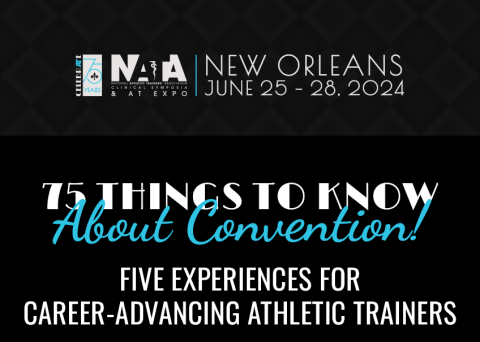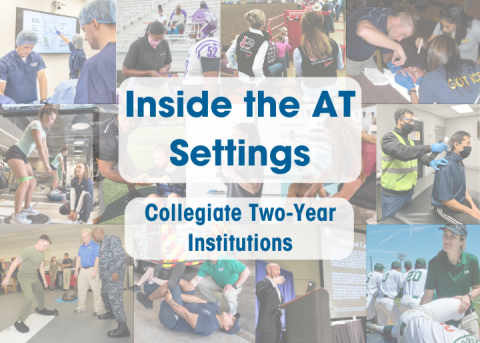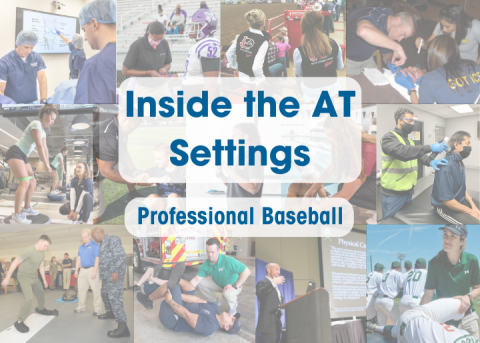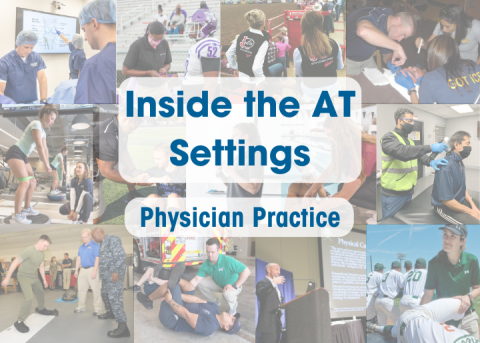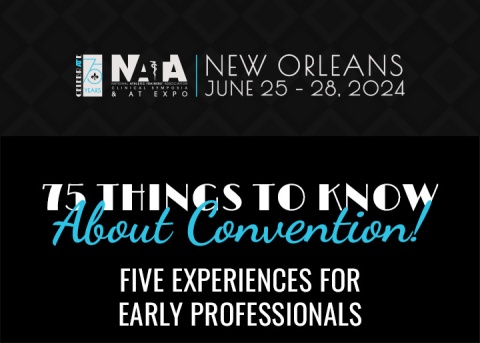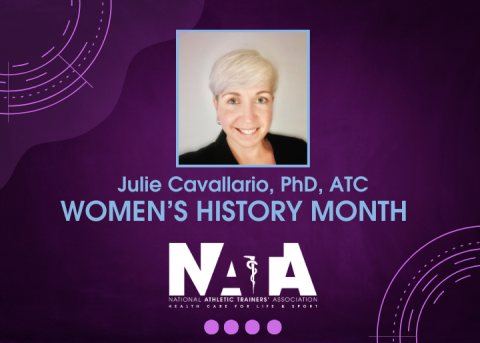
In honor of Women’s History Month this March, NATA is highlighting women who are working to advance the athletic training profession through research.
Julie Cavallario, PhD, ATC, took an unconventional route to becoming a researcher, starting her career in the clinic setting.
“I had been working clinically for about a decade,” Cavallario said. “I had consistently become more involved in the educational aspect of the profession over that time, starting as a preceptor, then instructing athletic training courses and then becoming a coordinator of clinical education.”
From her clinical education experience came her interest in research. Cavallario returned to school to complete her doctorate degree in human movement science where she began her research training.
“I selected research topics to address the challenges I encountered during clinical instruction, such as understanding how to measure student performance and growth during clinical education in a manner other than tracking time spent at a given experience,” she said.
Now graduate program director and associate professor at Old Dominion University School of Rehabilitation Sciences, Cavallario works to add more innovative solutions to the profession through her research.
She gives insight into her research journey and what she has learned along the way.
What led to the creation of the study, “Athletic Training Student Core Competency Professional Behavior Implementation Between Immersive and Non-Immersive Clinical Experiences: A Report From the Association for Athletic Training Education Research Network?”
This particular manuscript was one that I mentored my first doctoral student through and was part of a much larger project funded by the NATA Research & Education Foundation. It was an expanded version of my dissertation research. Ultimately, we wanted to understand how students could implement behaviors associated with the core competencies during clinical experiences. Given the recent inclusion of immersive clinical experiences in the Commission on Accreditation of Athletic Training Education standards for professional graduate programs, we felt that comparing those behaviors across clinical experience types would provide better insight for athletic training program administrators as they structured the clinical education components of their respective curricula.
What have you discovered in your research?
I think the biggest takeaway is that many of the assumptions we’ve made about students' opportunities to engage in meaningful patient care during clinical education are inaccurate. We previously measured clinical education almost exclusively by the time spent at an experience. We now know that factors such as the patient volume of the site, the type of setting, the typical length of patient encounters and the willingness of the preceptor to allow a student’s increasing levels of autonomy when working with complex conditions or injuries significantly impact a student’s experience and erudition. I hope that is changing how we recruit preceptors and clinical education sites and assess clinical learning.
How does the involvement of women in research advance the AT profession?
One of the things I’ve observed in 20 years of educating health care providers is that the more diverse the group of students, the more we learn. Ideas and experiences brought forward by a wider swath of socioeconomic, cultural and racial backgrounds provide richer discussion and insight into how people different from us experience the world. The same is true of research; ideas and research questions are ultimately born from our lived experiences. Women represent the majority of the professions’ gender identities, and their inclusion at the research table increases the perspectives and findings that inform the direction of athletic training in the future. Our future will be more well-rounded and address broader needs if we consciously invite women of all backgrounds to that table.
What’s next in your research?
I recently embarked on a drastic change of direction in my line of research, once again inspired by challenges observed in my role as an educator. I spend a significant amount of time attempting to recruit students into this profession, and one of the most critical barriers to recruiting and retaining someone into athletic training is the viability of the salary to meet their household needs. I decided to begin examining salary and salary negotiation practices in the profession to better inform students on how to advocate for themselves and their needs. The lack of existing evidence to help students and clinicians in salary negotiation practices negatively impacts the profession, and I hope my research can assist with that, even if only in a small way. I have had several people reach out and share success stories of negotiating higher wages after attending a talk I gave, which inspires me to continue this line of research.
What advice do you have for ATs interested in sports medicine research?
I think many people are intimidated by the concept of research, and I used to be one of them. My passion for research has always been fueled by attempting to solve challenges I observe in my job. I would advise any AT interested in sports medicine research to approach it from the perspective of trying to solve a problem that they observe impacting an aspect of the profession or their daily responsibilities in a personal way, be it impacting students, colleagues, employers or patients. Taking this approach feels less like research and more like helping others, which is why most of us went into this profession in the first place.

